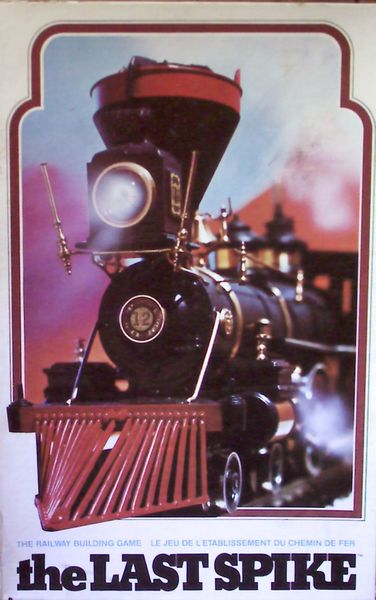The Last Spike (1976) Board Game
The Last Spike board game was released in 1976 and designed by Tom Dalgliesh and Lance Gutteridge. It falls under the categories of Economic and Trains, incorporating mechanisms such as Stock Holding and Tile Placement. The game is set during the construction of the transcontinental railroad in the United States, where players compete to connect their rail lines and finish the last spike.
Game Components of The Last Spike
How To Setup The Last Spike
To set up the game, players start by placing the gameboard, which shows a diamond-shaped lattice track path across the map of the USA from St. Louis to Sacramento. Each intersection on the lattice represents a city where players can buy stock. Players receive initial funds and stock certificates. The track tiles are shuffled and placed face down, ready for players to draw and place during the game.
Gameplay Mechanics and Game Objective
Player Experience
The Last Spike is known for its fast-paced gameplay, requiring quick decisions to secure the best land and help competitors when necessary. The game is quick to learn and enjoyable for both kids and adults. However, it involves some luck, which may not appeal to players seeking purely strategic games.
Pros
Cons
Personal Thoughts on The Last Spike
The Last Spike is a great game for those interested in land speculation and the history of railroads. It strikes a balance between being interesting, challenging, and not too complicated. While it may not appeal to players who prefer purely strategic games or high-quality components, it is an excellent choice for families and casual gamers looking for a fun and engaging experience. The game’s redesign in 2015 has made it more appealing to a broader range of players, including strategy and eurogame enthusiasts.
We are supported by our audience. When you purchase through links on our site, we may earn an affiliate commission, at no extra cost for you. Learn more.

